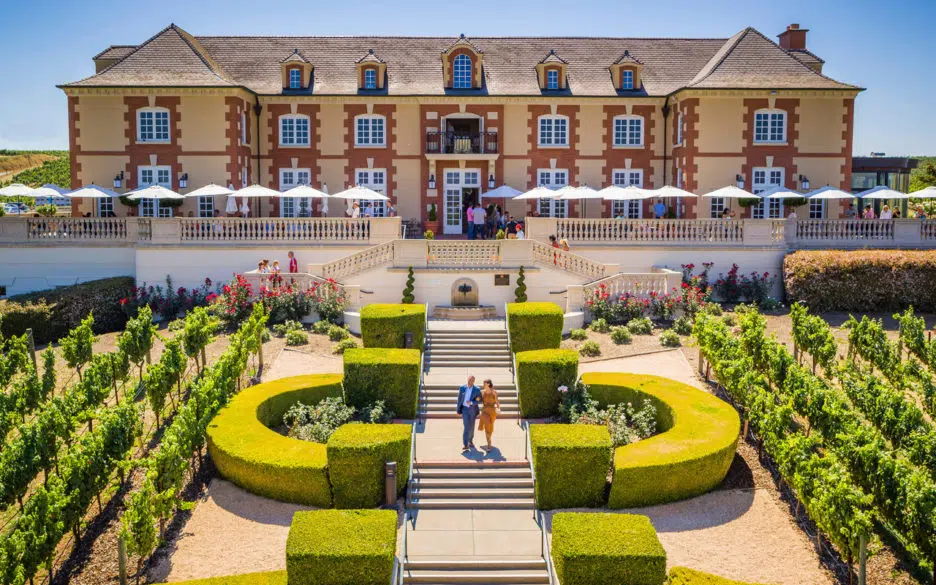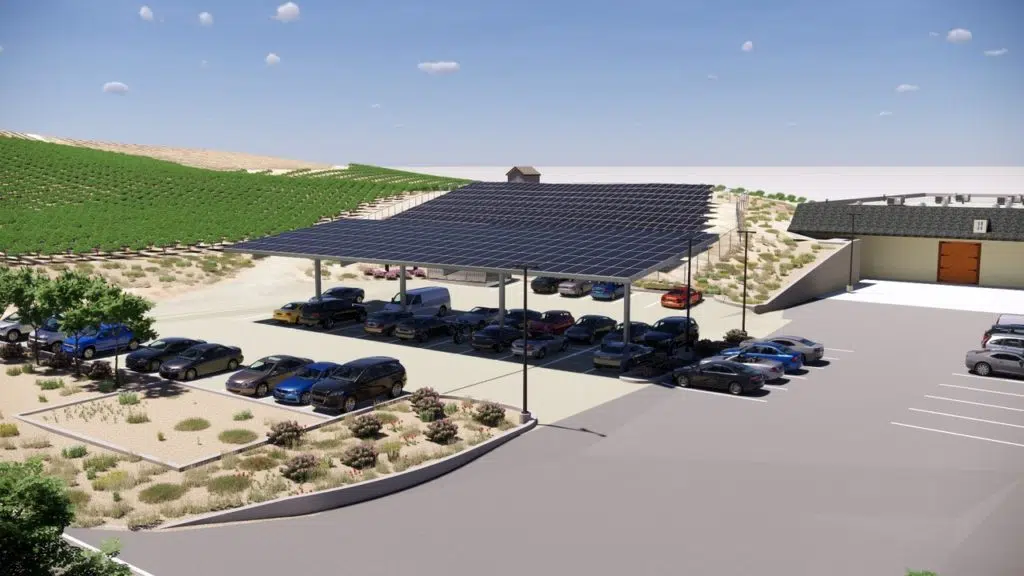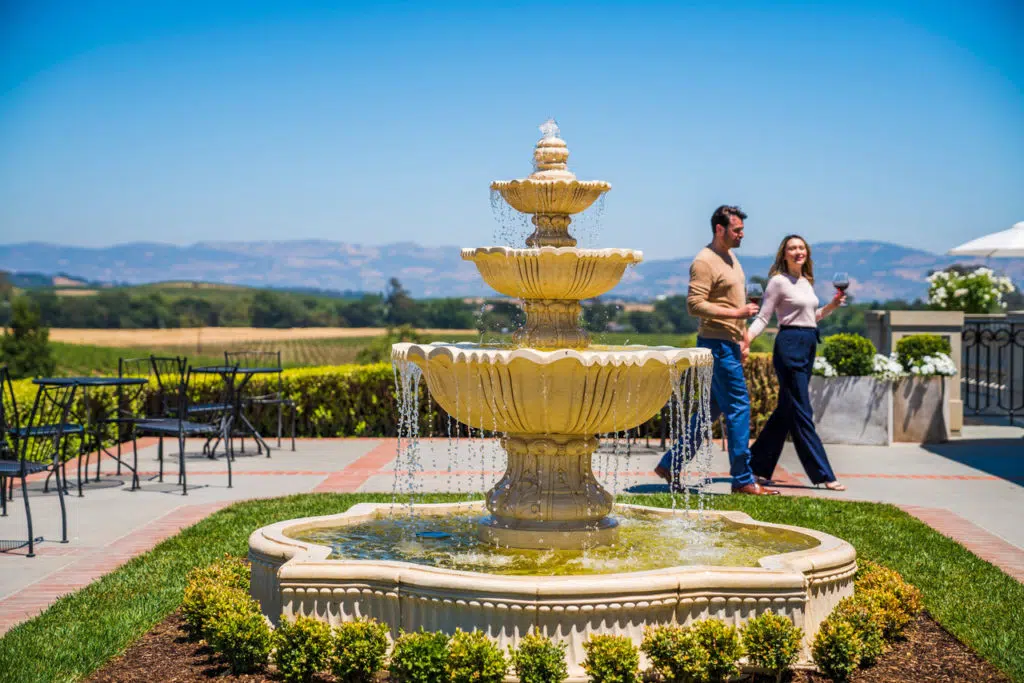Meet the Napa Winery Using Solar Power to go “Off-Grid”
California’s wine industry is expected to face unprecedented climate related challenges in the coming years. Learn how one leading winery is taking action.
A Napa winery, Domaine Carneros, who installed the biggest solar power project of any winery in the world back in 2003, will now be the fourth winery in California to have a microgrid, allowing it to operate independently off-grid for up to a week in case of a power outage.
The winery, a producer of both sparkling wines and Pinot Noir on about 400 acres, is on track to complete its microgrid in November 2022.
The Domaine Carneros solar microgrid project
Winner of the 2020 Climate Champion award in the business category from Napa Climate NOW!, a local citizens’ group, and a 2019 California Green Medal Business Award, and a Certified California Sustainable Winery since 2015, it’s the US outpost of Taittinger, the famous Champagne producer in France founded in 1732.
See also: How climate change threatens the wine industry
Domaine Carneros has a chateau inspired by Taitittinger’s 18th-century Chateau de la Marquetterie, plus formal gardens and a majestic fountain, in the Carneros AVA, a wine region located in both southern Napa and Sonoma. Its original solar panels are on the chateau rooftop and on a back building known as the Carriage House.
The microgrid is being built atop the carport and as ground-mounted structures by EDF Renewables, which develops and operates clean energy plants in over 20 countries, especially in Europe and North America.
Back in 2003, the winery’s solar project was regarded as a “hippie eccentricity,” noted the Napa Valley Register, and supplied about 35-40% of its electricity needs.
Its new upgraded 250-kilowatt solar project combines battery storage, allowing the winery to draw from stored energy during costly evening peak-demand times, with smart controls, enabling it to take the whole facility off the electrical grid in case of power outages and limit its use of diesel fuel for backup generators, is expected to supply 75-85% of its electricity needs, said Remi Cohen, CEO of Domaine Carneros, who took over in 2020, the year the project was announced.
It’s to help protect the environment in the face of climate change, and seemed like the next step.
- REMI COHEN, CEO OF DOMAINE CARNEROS
Since major power outages and more wildfires followed the rash of wildfires that plagued Napa and Sonoma in 2019 about 10 months later, it seemed a wise move.
Other California wineries turn to microgrids as an option
California’s two dozen or so microgrids are mostly at hospitals or municipalities. The three California wineries that already have microgrids are Alpha Omega in Napa, Stone Edge Farms Estate Vineyards & Winery in Sonoma, and Robert Mondavi Institute for Wine & Food Science winery at the University of California, Davis in Yolo County, notes Wine Business Monthly.
The microgrid installed at Alpha Omega in 2016 generates nearly 100% of its electricity, about one million kilowatt hours per year, and lowered its energy bill from $15,000 a month to $1,000 a month, according to a report by California Energy Commission.
Sustainability and female leadership at Domaine Carneros
At Domaine Carneros, Cohen continues a long tradition of sustainability under female leadership. She succeeded Eileen Crane, its founding winemaker and CEO for 33 years, and was called “America’s doyenne of sparkling wine.”
Claude Taittinger, the family-owned winery’s CEO in France, tapped Crane in 1987 to oversee the construction of its winery in northern California and lead it. At the time, Crane was vice president of Gloria Ferrer Caves & Vineyards, a sparkling wine producer founded by Spain’s Ferrer family in the Carneros AVA in Sonoma.
Solar-powered wineries: a growing trend?
But Domaine Carneros is one of 46 winery members with solar arrays, according to Anna Brittain, executive director of Napa Green, the leading certification program for both wineries and vineyards in the county. Among the oldest or biggest are Grgich Cellars, Spottswoode Estate Vineyards & Winery, ZD, Cuvaison, and Far Niente, all around 2007/08, Charles Krug in 2013, and Clos du Val in 2014 (with more panels added in 2018 at Hirondelle House.)
An unusual floating solar array, where almost 1,000 solar panels attached to pontoons float on an irrigation pond at Far Niente winery, is believed to be the world’s first Floatovoltaic solar installation.
Spottswoode is the first Napa winery to win B Corp certification for its environmental and social practices. Also, one of the first six wineries to join International Wineries for Climate Action, whose members, from Europe, North and South America, Australia to New Zealand, collaborate to lower carbon emissions industry-wide, Spottswoode is currently expanding its solar array.
When asked why to make the effort to be sustainable, Napa Green’s Brittain replies:
Every aspect of a business extends from and returns to nature. Businesses have an onus to place themselves in the context of the ecosystems and communities on which they depend. A top-down commitment to sustainability is no longer a nice-to-have; we’re facing a climate crisis.
- ANNA BRITTAIN, EXECUTIVE DIRECTOR OF NAPA GREEN
About the Author: Sharon McDonnell is a travel writer who is passionate about sustainable living and ecotourism. She is a regular contributor at Fodor’s and is the author of The Everything Internet Book. Sharon lives in the Bay Area.
Making the commitment to third party certification takes time and effort, but it is worth it to demonstrate our commitment to the community and to protect our watershed, our land and the air we breathe.
- Susan Boswell, Chateau Boswell Winery



